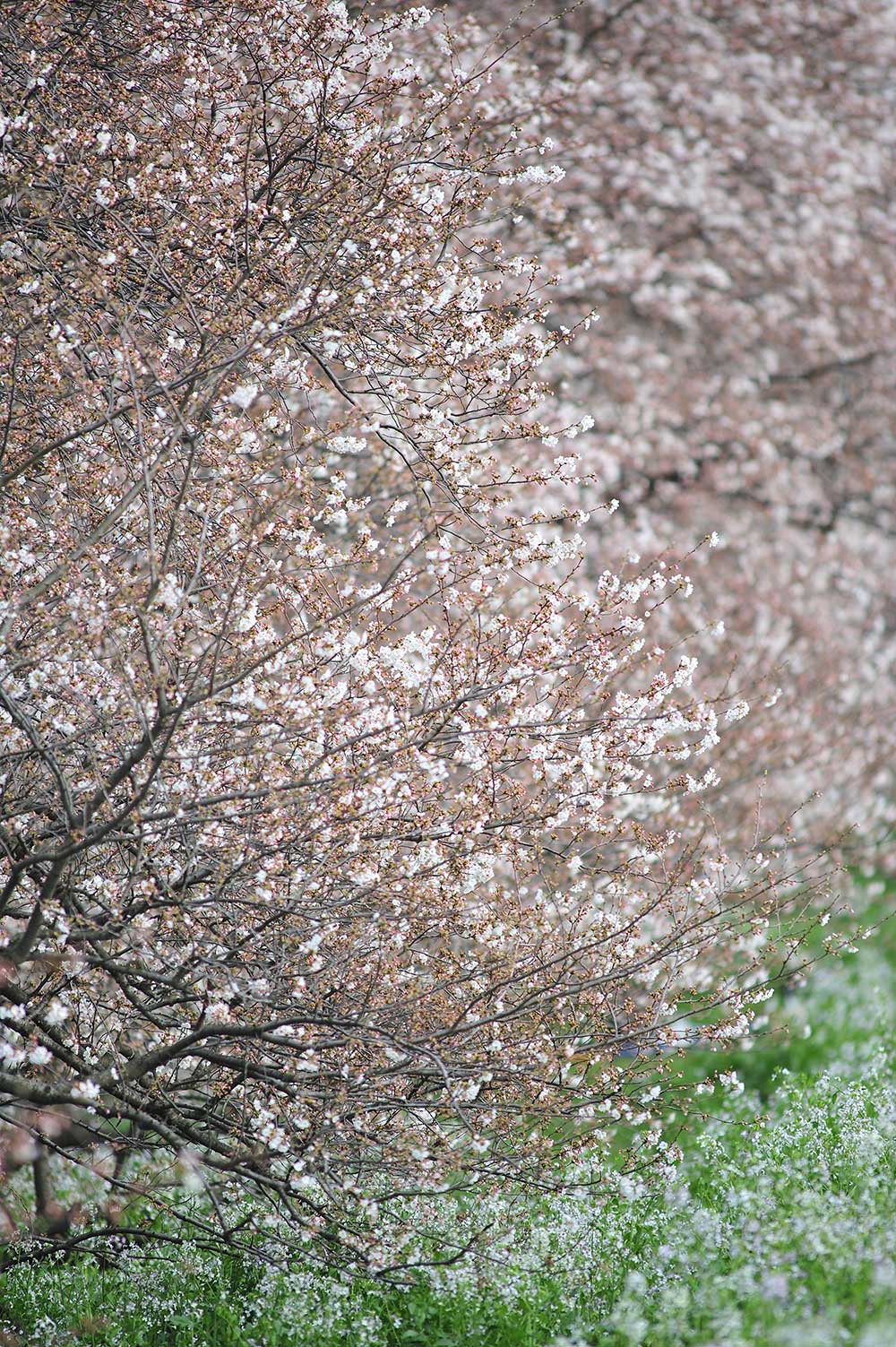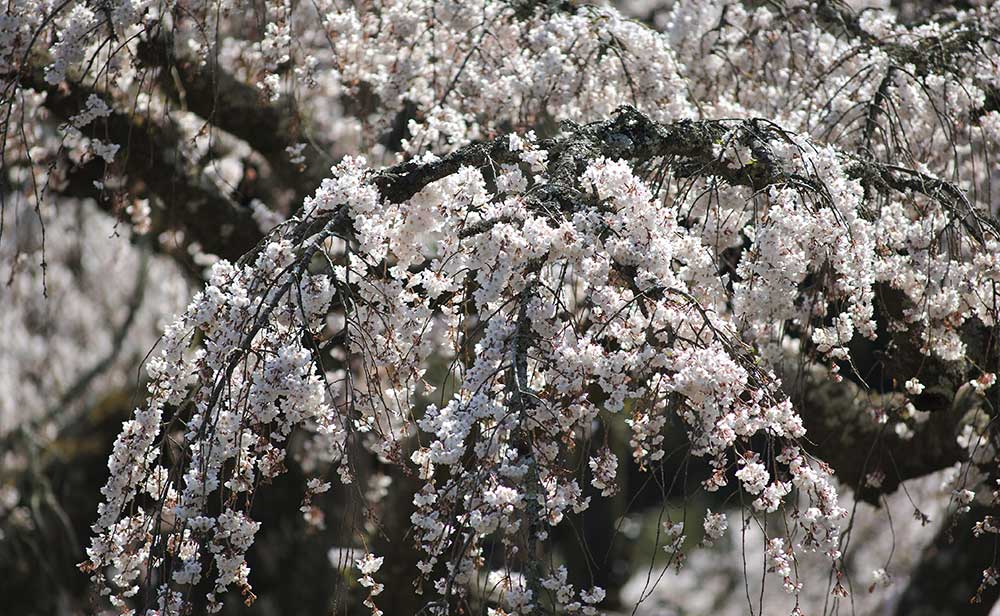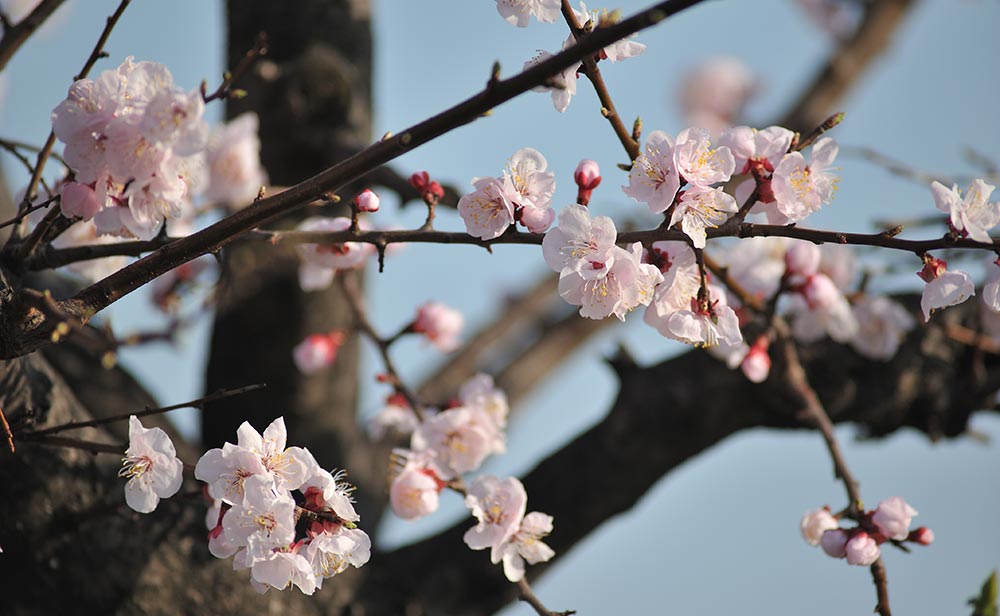NIKKOR - The Thousand and One Nights No.66

The AI Nikkor 400mm f/3.5 IF-ED
Tale 66 continues Tale 50's discussion of super-telephoto lenses. The AI Nikkor 400mm f/3.5 IF-ED was once considered the super-telephoto standard with "standard" having two meanings. First, it referred to the 400mm focal length, which is considered the standard focal length for fields of photography that commonly use telephoto lenses, such as sports and wildlife photography. For these fields that require photographers to somehow bring distant subjects significantly closer, 400mm lenses are considered "standard" lenses, 200-300mm lenses "wide-angle", 500-600mm lenses "medium telephoto", and 800mm and longer lenses "telephoto" lenses. However, that is not the only reason this lens was described as "standard". The second reason was that the combination of this lens and the Nikon F2 was regarded as standard equipment for super-telephoto photography by those who reported on sporting events and the like. Therefore, the AI Nikkor 400mm f/3.5 IF-ED was considered a "standard" super-telephoto lens.
by Kouichi Ohshita
I. After the Tokyo Olympics
As explained in Tale 50, the super-telephoto lenses, including the Nikkor-Q Auto 400mm f/4.5, released in time for the 1964 Tokyo Olympics, were extremely well received, becoming the must-have lenses for sports photographers. Users of these lenses increased steadily with the 1968 Olympics held in Grenoble and Mexico City, as did demands regarding lenses. One of these demands resulted from the switch to the use of quality color photos on the covers of major photographic magazines. This created the need for significantly greater suppression of chromatic aberration than had been necessary for black-and-white photos. It was also at this time that demand for faster (brighter) telephoto lenses arose due to the fact that color film had lower sensitivities than did black-and-white film.
Our first response to these demands was the Nikkor-H 300mm f/2.8, introduced for the 1972 Sapporo Olympics. This lens, previously introduced in Tale 11, was said to have introduced a whole new generation of lenses for the age of color photos as it was Nikon's first lens to utilize ED glass, which minimizes chromatic aberration, and its fast f/2.8 maximum aperture also provided the speed (brightness) that color film required. The success of this lens led to the adoption of ED glass in telephoto lenses developed for the 1976 Innsbruck/Montreal Olympics. The 300mm f/4.5 ED, 600mm f/5.6 ED, 800mm f/8 ED, and 1200mm f/11 ED, all released in 1975, made up our four-lens series of ED telephoto lenses. However, the series did not include a 400mm lens.
II. Striving for super-telephoto lenses that are easier to use
The reason there was no 400mm lens included in that series was that in addition to adopting ED glass for this super-telephoto series that used focusing units, we were also developing super-telephoto lenses that did not use focusing units.
With super-telephoto lenses with focusing units, focal length can be changed by simply replacing lens elements. They offered an additional excellent advantage in that by replacing the focusing unit, they could be used with medium-format Bronica cameras. These two advantages made up for this type of lens' greatest drawbacks, which were their size and weight. As noted in Tale 50, for focusing units to be adopted for more than one type of lens, aperture position and back focus had to be the same with all applicable lenses. To put it a little roughly, using a 600mm lens as the standard, the total length of a 400mm lens must be designed to be longer than would seem necessary. The weight is also a significant drawback because the lens barrel and the focusing unit had to be independent of one another. As a result, the total length (from the mount to the end of the lens barrel) of the Nikkor-Q Auto 400mm f/4.5 was 464 mm, and it weighed 4.3 kg. In short, it was a giant among 400mm lenses. Naturally, photographers clamored for a smaller and lighter 400mm lens, and we had to respond immediately.
There was also another request regarding operation that had to do with focus ring torque. With super-telephoto lenses at that time, the entire lens was moved with focusing. Thus, heavy lenses like super-telephoto lenses required considerable physical strength to focus them. In order to improve this aspect of operation, we really had no choice but to eliminate the focusing unit and design a dedicated lens barrel. This was how development of this 400mm lens began.
III. The AI Nikkor 400mm f/3.5 IF-ED
The 400mm and 600mm optics were designed with Mr. Soichi Nakamura taking the lead on the 400mm, and Mr. Kazuo Arashida in charge of the 600mm. Having worked directly under and trained by Mr. Takashi Higuchi, Nikon's pioneer in the field of zoom lenses, Mr. Nakamura and Mr. Arashida had extensive knowledge of zoom lenses. This enabled the successful designing and development of the two epoch-making lenses.
In researching this article, I discovered a lot of relevant materials from the past, among them information showing that a 600mm lens that extended and retracted with focusing and for which ED glass had been adopted was once released, but I could find nothing indicating that there had ever been a similar 400mm lens. This shows that development of the 400mm lens progressed with unwavering resolve. The goal was to develop a fast (bright) telephoto lens that would achieve better focusing operation, a smaller size, and a lighter weight than was possible using a focusing unit.
Mr. Nakamura and Mr. Arashida worked together on, and shared their ideas for, the basic design. While measures for reducing the amount of torque required to rotate the focus ring had already been examined before that time, they had a particularly difficult time designing the fast (bright) 400mm lens. Less than a year remained until the start of the Montreal Olympics in July when they finally settled on a design and presented their drawings. Normally, the process for getting a lens ready for market begins with trial production, continues with evaluation of results, and ends with the start of mass production. However, these lenses absolutely had to be ready in time for the Olympics. Instructions to begin mass production were issued during trial production, and mass production began as soon as trial production ended. Production was, of course, limited, but thus Nikon was able to introduce the lenses at the Montreal Olympics. Development of these two lenses was truly a tightrope act.
IV. Lens construction

Figure 1 shows how this lens is constructed. The lens is constructed with a three-group structure. The first group is made of three lens elements that together work as a convex lens, the second group is also constructed of three lens elements that form a concave structure, and the third group is a joined lens in a convex structure. Adoption of Nikon's internal focusing (IF) system, with which only the second group moves with focusing, has resulted in nimble focusing from infinity to close-up. What's more, chromatic aberration can be reduced with adoption of ED glass for the first and second lens element from the front.
As those knowledgeable about lenses might guess, the idea for this internal focusing system was based on positive-lead zoom lenses. It seemed that if there were no need to change focal lengths, then the second group could be moved for focusing. In addition, there was no doubt that variations in aberration that occur with focusing could be suppressed, just as variations in performance that occur at different focal lengths were suppressed with a positive-lead zoom structure. This lens is the result of the reworking and redesigning of each lens group based on this idea. Designed with a triplet structure comprised of a convex first group, a concave second group, and a convex third group, the AI Nikkor 400mm f/3.5 IF-ED structure provides more effective compensation for all types of aberration than does the common telephoto structure made up of a convex-concave two-group structure. This served as a key to achieving the fast (bright) f/3.5 maximum aperture for a telephoto lens. Further, the total length of the lens was reduced from that of other lenses with a similar focal length by combining the second and third groups to operate as a concave lens, achieving the best structure for a telephoto lens.
In theory, aberration with lenses that extend and retract with focusing varies. Variations in spherical aberration that cannot be sufficiently compensated is especially common with fast (bright) lenses, and variations in the degree of curvature of field are great with shorter telephoto type structures. Adoption of Nikon's internal focusing system with the 400mm f/3.5, superior performance was achieved, even with shooting at short distances, by moving the second lens group so that variations in aberration at close distances were canceled. This focusing system far exceeds that with which the lens barrel extends and retracts with focusing in terms of both operability and performance.
V. Lens rendering
As always, let's take a look at this lens' rendering characteristics with sample images. Having covered two other 400mm lenses in these NIKKOR The Thousand and One Nights—the Nikkor-Q Auto 400mm f/4.5 in Tale 50 and the Dodotto 400 in Tale 54—it seems that the defining difference is clearly ED glass. The AI Nikkor 400mm f/3.5 IF-ED offers notably sharp and clear rendering from maximum aperture. With backlit scenes and those exhibiting stark differences in brightness, the previous two lenses exhibited noticeably low contrast and purple fringing around edges, but chromatic aberration was not a problem with this lens.
Sample 1 is a photo of a group of black-winged stilts resting in the twilight. As a super-telephoto lens, the focal length of 400mm is perfect for capturing this type of scene. With this sample, I stopped down the aperture to f/8 so that the more distant birds would not be too blurry.
Sample 2 is a photo of black-winged stilts in flight. When using the Nikkor-Q Auto 400mm f/4.5 with a focusing unit, there is very little desire to capture scenes like this of birds in flight with hand-held shooting due to the combined length and weight of the lens and focusing unit, but the smaller size and lighter weight of the AI Nikkor 400mm f/3.5 IF-ED, even hand-held shooting is easy. In addition, extremely light focus torque makes it very easy to adjust focus using a single finger. Captured at maximum aperture, birds in the foreground and the background are quite blurry. I probably should have increased the sensitivity and stopped down the aperture for this shot.

D700 w/ AI Nikkor 400mm f/3.5 IF-ED at f/8.0, ISO 500, aperture-priority auto
Processed with Capture NX-D

D700 w/ AI Nikkor 400mm f/3.5 IF-ED at f/3.5, ISO 200, aperture-priority auto
Processed with Capture NX-D
Sample 3 is a photo of a common kingfisher captured at maximum aperture. With the water between us, this was as close as I could bring the bird with a 400mm lens. At this distance, the surrounding scene must be considered with framing with this lens as it is a "standard" lens in the super-telephoto series.

D700 w/ AI Nikkor 400mm f/3.5 IF-ED at f/3.5, ISO 200, aperture-priority auto
Processed with Capture NX-D
Sample 4 is a photo of a row of cherry trees captured at maximum aperture. The super-telephoto nature of this lens produces a compression effect, and the shallow depth of field resulting from its fast (bright) aperture make the branches in the foreground stand out.
For Sample 5 I tried capturing a close-up of the fully opened blossoms on a weeping cherry. The image looks like it was captured with a macro lens commonly used to photograph flowers. Telephoto and super-telephoto lenses are handy for photographing the blossoms of taller trees and bushes that the photographer cannot get close to. As this is a fast lens, background and foreground blur makes the intended subject stand out clearly. However, some may find the blur characteristics a little harsh. This is because while lenses that extend and retract with focusing tend to exhibit spherical aberration that softens background blur with shooting at close distances, variations in spherical aberration are suppressed with lenses that focus internally, even at close shooting distances.

D700 w/ AI Nikkor 400mm f/3.5 IF-ED at f/3.5, ISO 360, aperture-priority auto
Processed with Capture NX-D

D700 w/ AI Nikkor 400mm f/3.5 IF-ED at f/3.5, ISO 200, aperture-priority auto
Processed with Capture NX-D
Sample 6 is a close-up photo of plum blossoms captured very near the minimum focus distance. I think you can see that even at the minimum focus distance, excellent rendering characteristics are maintained.
Sample 7 is a photo of flowers on daikon radish plants growing in a dry riverbed. Using this lens with its fast (bright) aperture to achieve a great deal of bokeh produces a dreamy photo in which foreground and background flowers are greatly blurred. In this photo as well, the characteristics of this lens are visible with slightly softer foreground blur and somewhat harsher background blur.

D700 w/ AI Nikkor 400mm f/3.5 IF-ED at f/3.5, ISO 200, aperture-priority auto
Processed with Capture NX-D

D700 w/ AI Nikkor 400mm f/3.5 IF-ED at f/3.5, ISO 200, aperture-priority auto
Processed with Capture NX-D
I used the 400mm f/4.5 with a focusing unit for Tale 50 and the 400mm f/3.5 for this Tale 66 to get a feel for what sports and wildlife photographers at that time must have experienced. Assuming that I would have to use a tripod, and all the difficulties that come with super-telephoto lenses, there is no mistaking the surprise and excitement I felt when I picked up this 400mm super-telephoto lens that is fully capable of hand-held shooting. The speed (brightness) of this f/3.5 lens is amazing. The viewfinder display is easy to see, the lens is well balanced in terms of size, and focus is extremely accurate. The combination of these characteristics is likely another reason the lens was known as the super-telephoto standard. This lens, which made its debut at the Montreal Olympics, came to be known as the super-telephoto standard, and was relied upon by many a professional photographer for its ability to capture amazing photographs including impressive once-in-a-lifetime sports shots, beautiful birds, and powerful wildlife.
In 1994, Mr. Nakamura, Mr. Arashida, and Mr. Kiyoshi Hayashi were awarded the Chairman's Prize by the Japan Institute of Invention and Innovation for their invention of super-telephoto lenses like this one that are equipped with Nikon's internal focusing system. This is not the only NIKKOR super-telephoto lens to be equipped with Nikon's IF system. The tradition was continued with lenses such as the 300mm f/2.8 IF-ED (1978), the 800mm f/8 IF-ED and 1200mm f/11 IF-ED (1979), the 200mm f/2 IF-ED (1982), the 600mm f/4 IF-ED and 300mm f/2 IF-ED (1984), and the 400mm f/2.8 IF-ED (1986), proving that lenses equipped with Nikon's IF system have long been favored by many photographers. I'm sure that these lenses will continue to record beautiful images well into the future.

NIKKOR - The Thousand and One Nights
The history of Nikon cameras is also that of NIKKOR lenses. This serial story features fascinating tales of lens design and manufacture.

